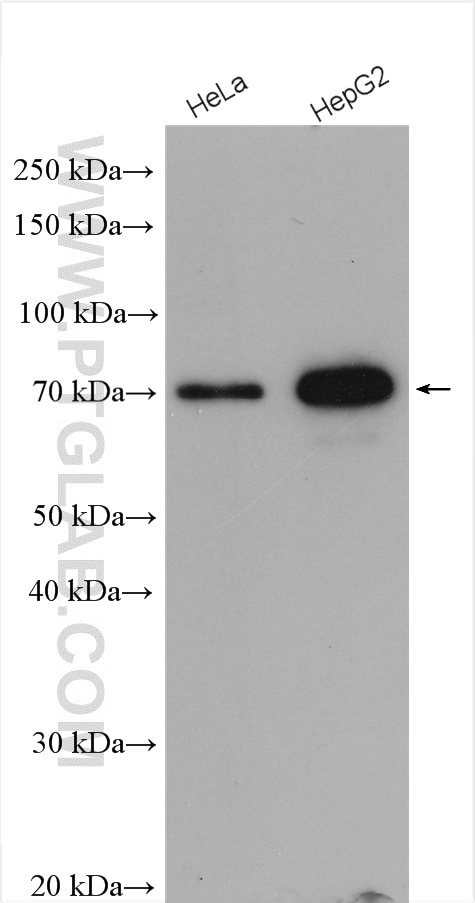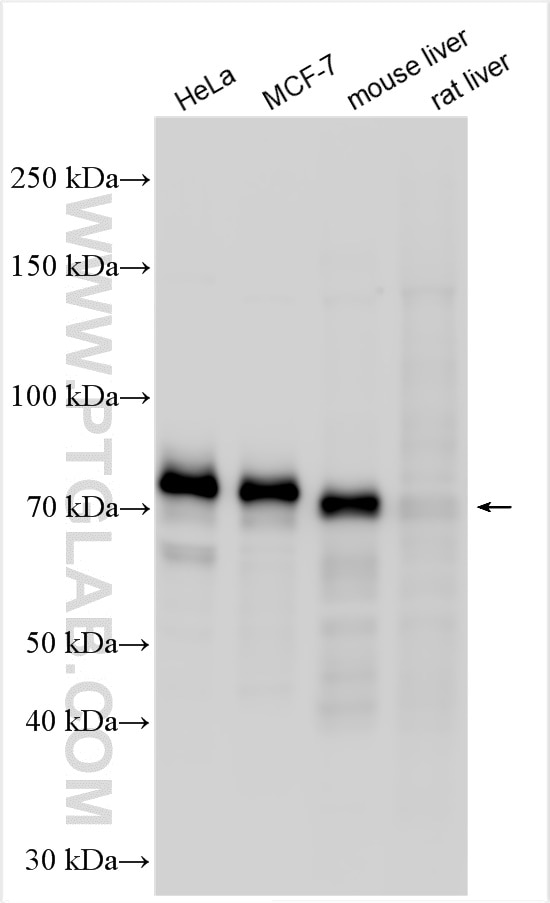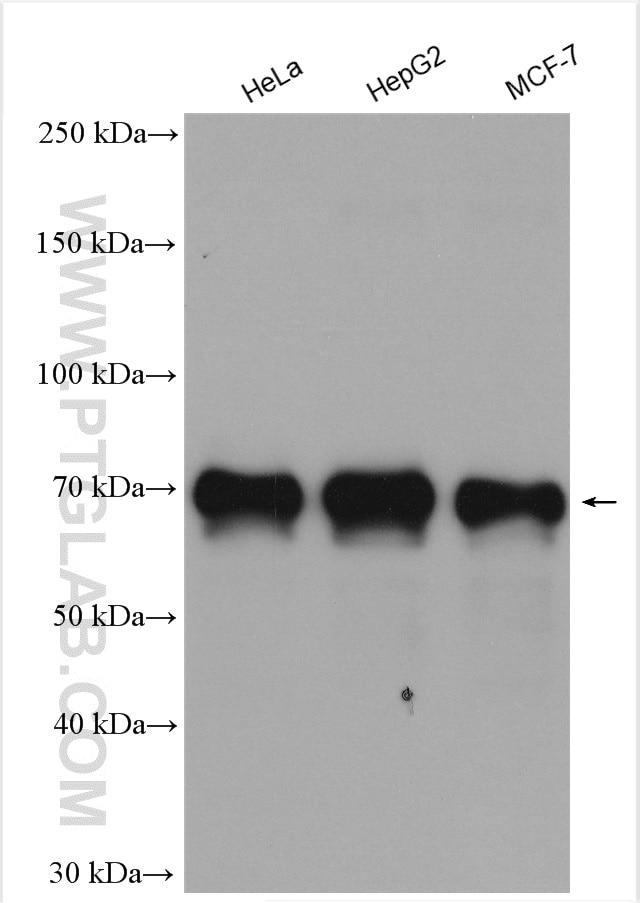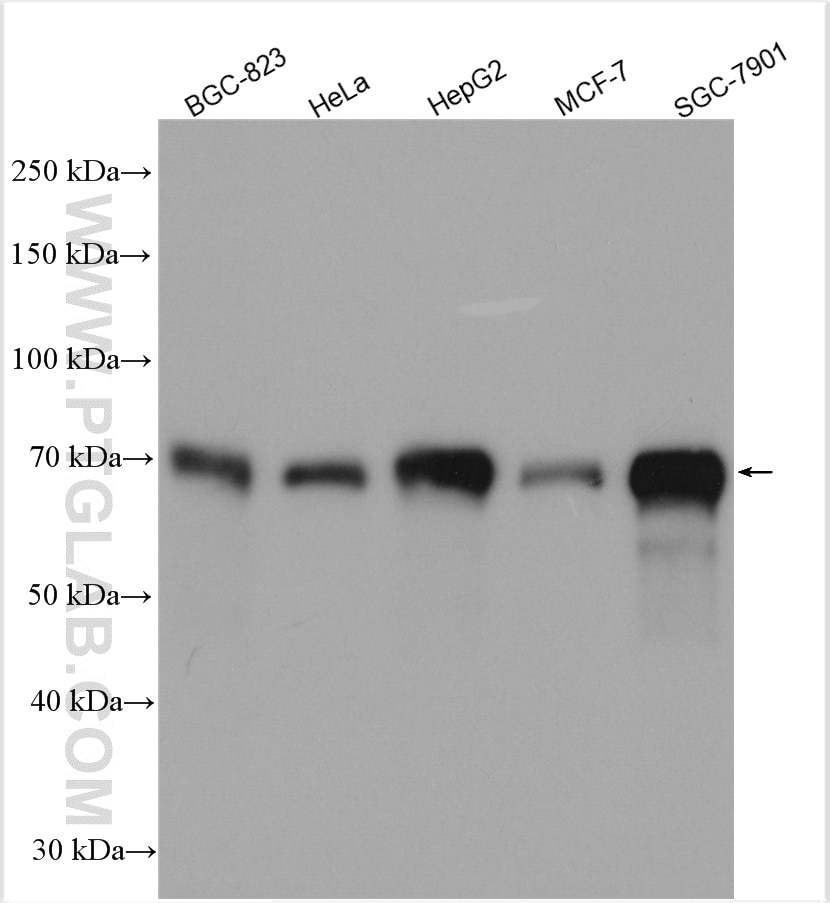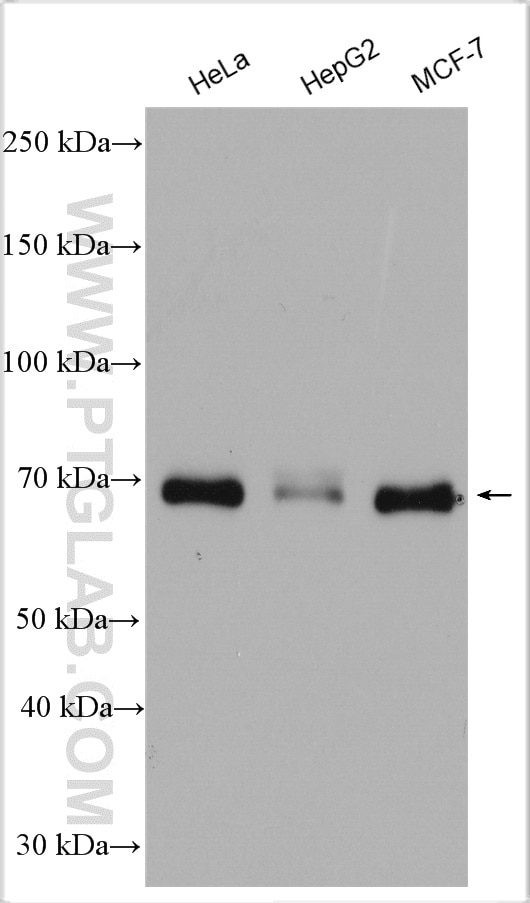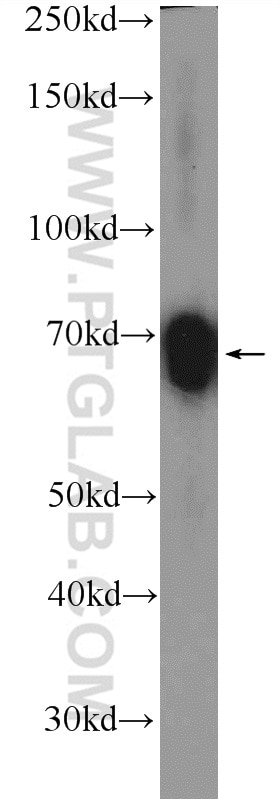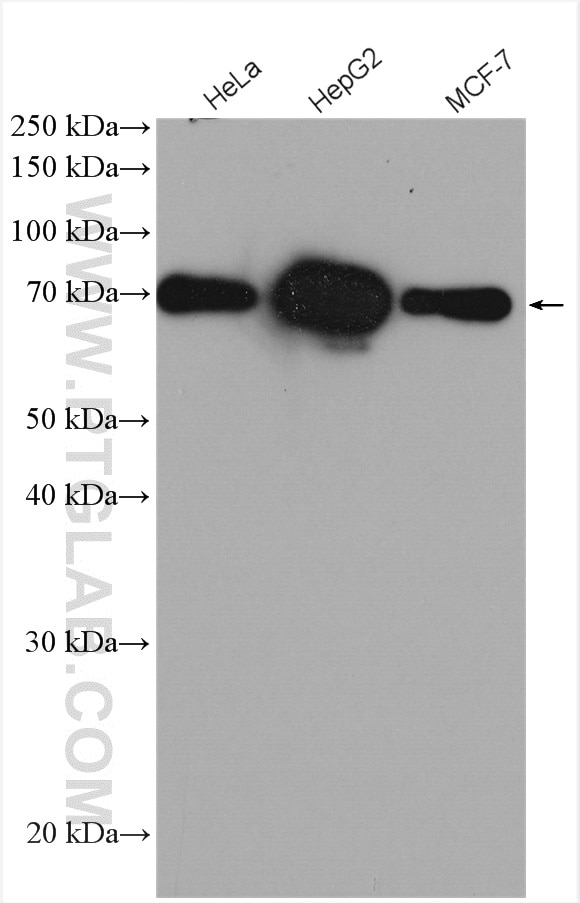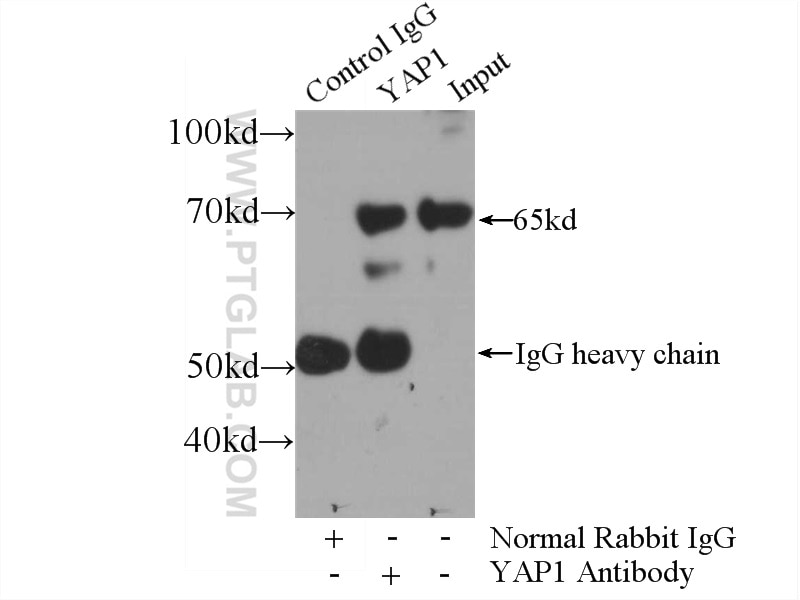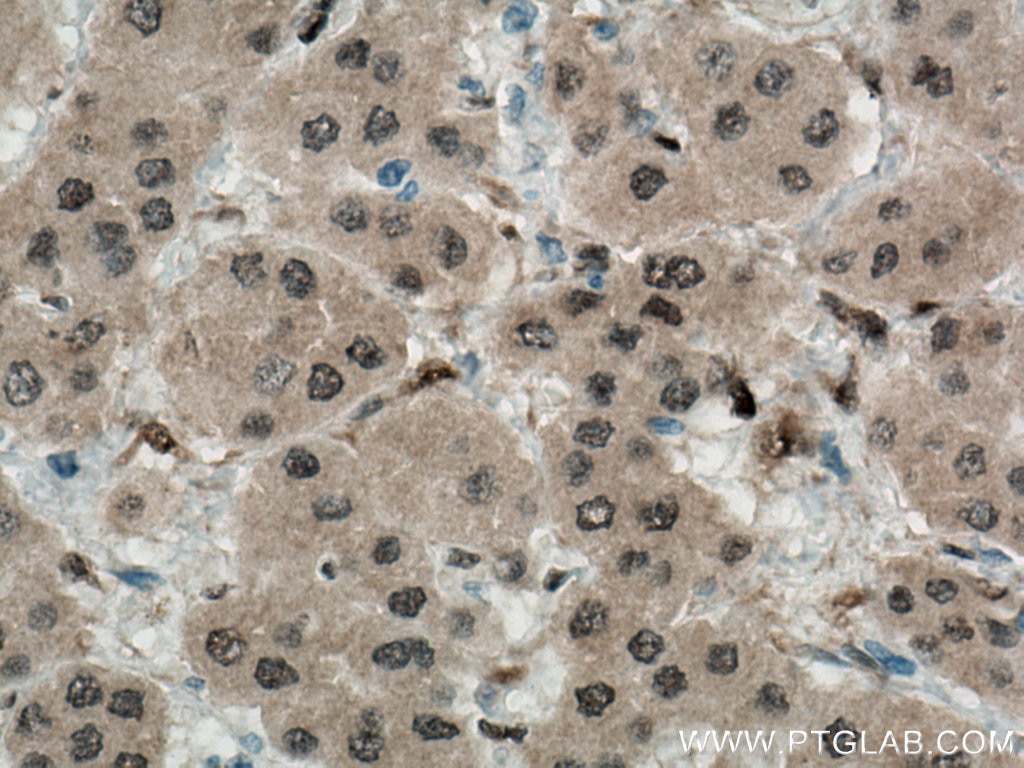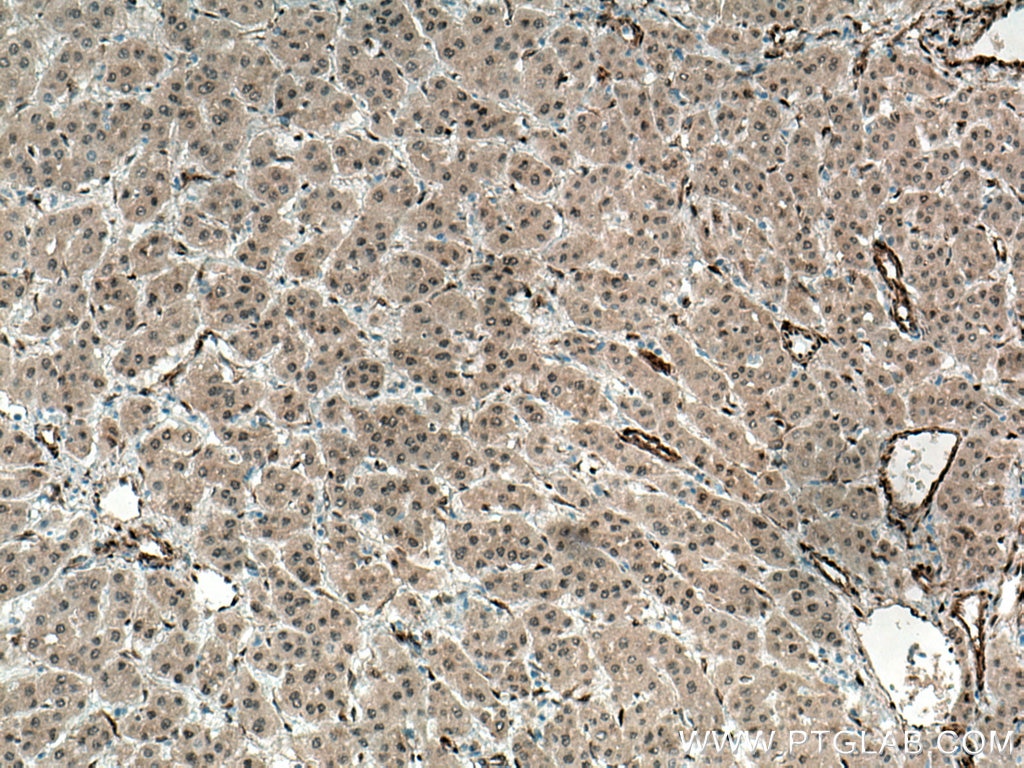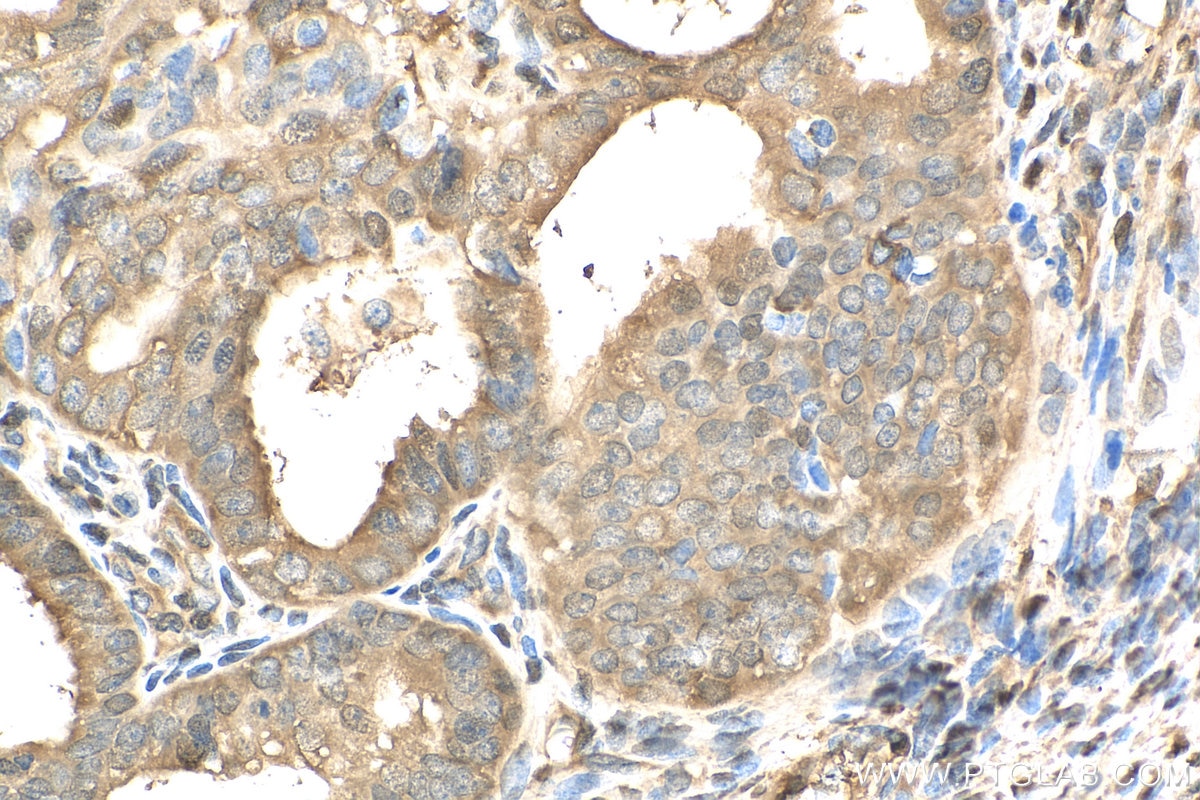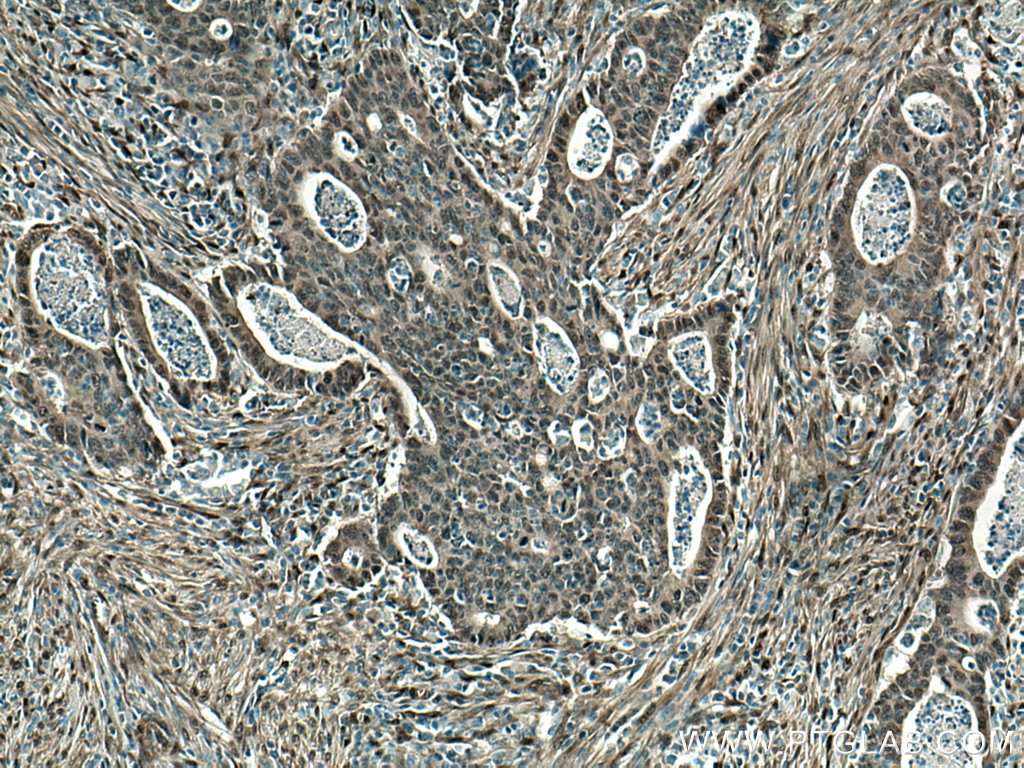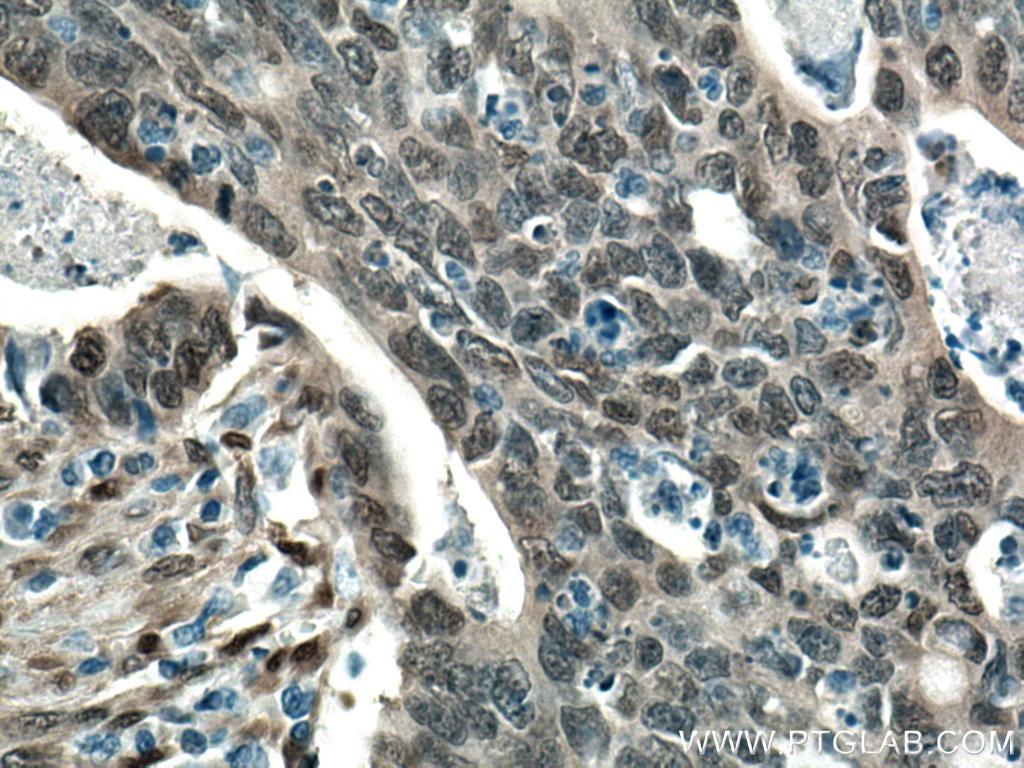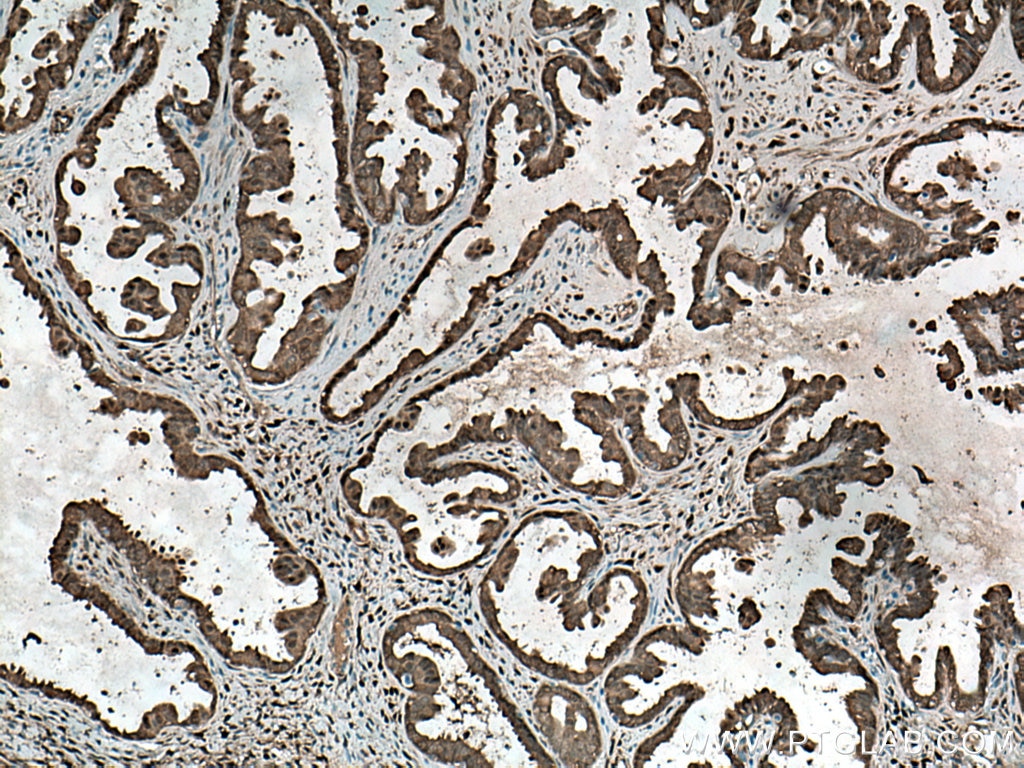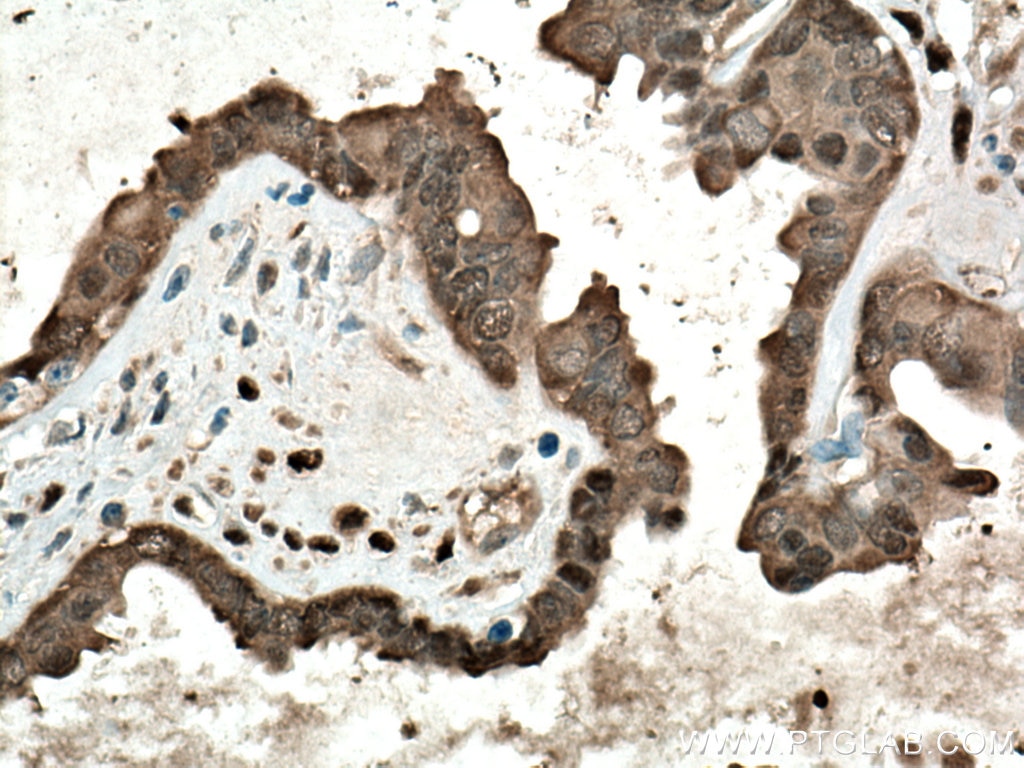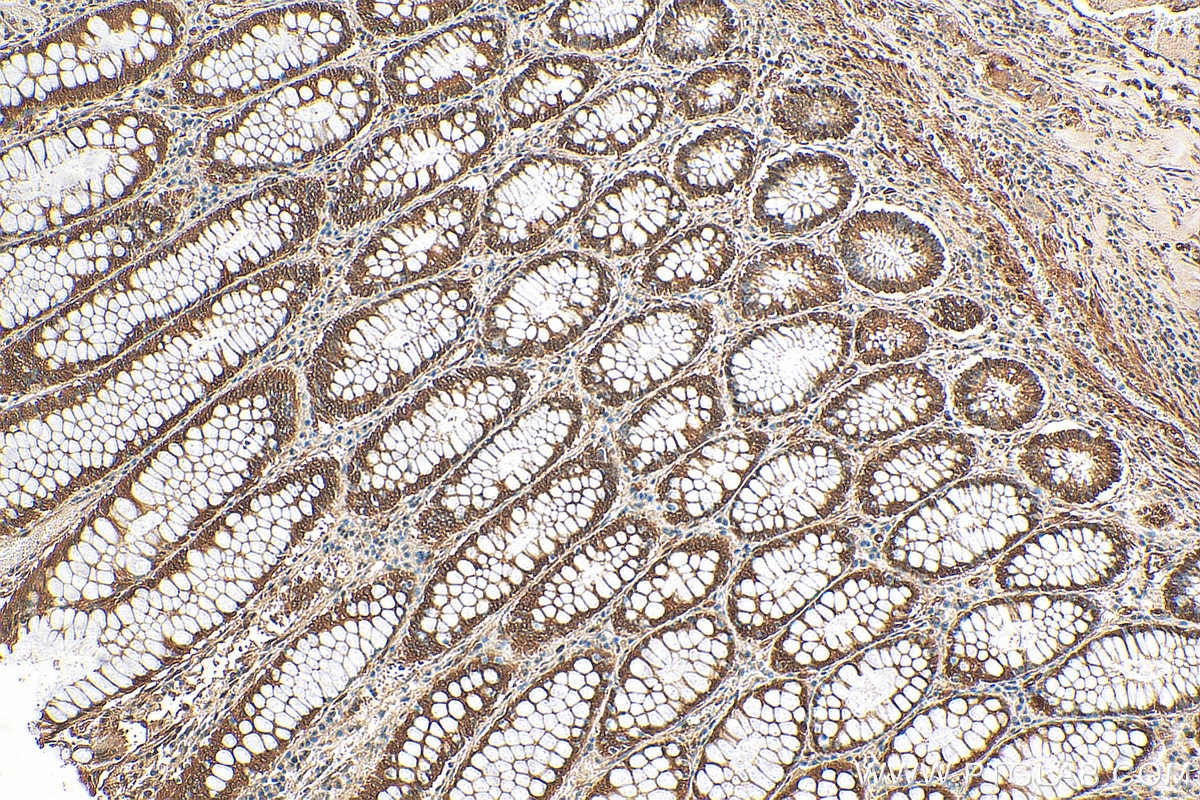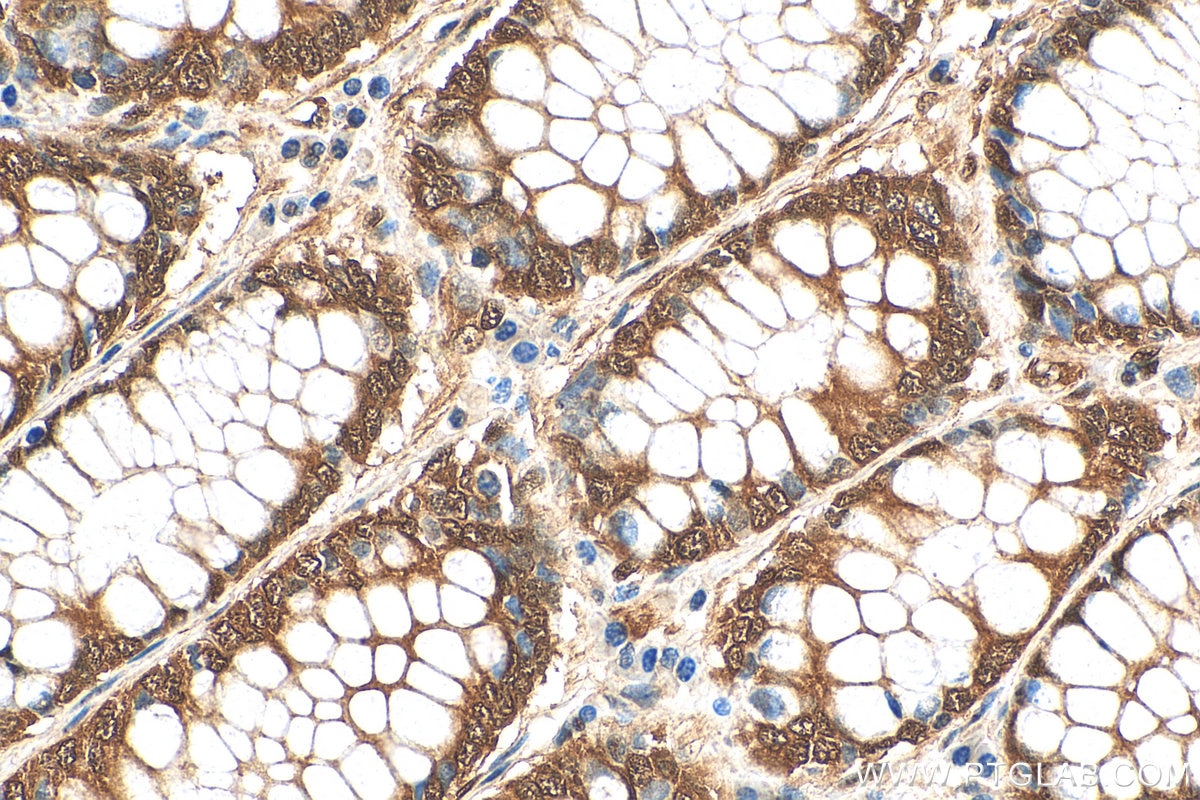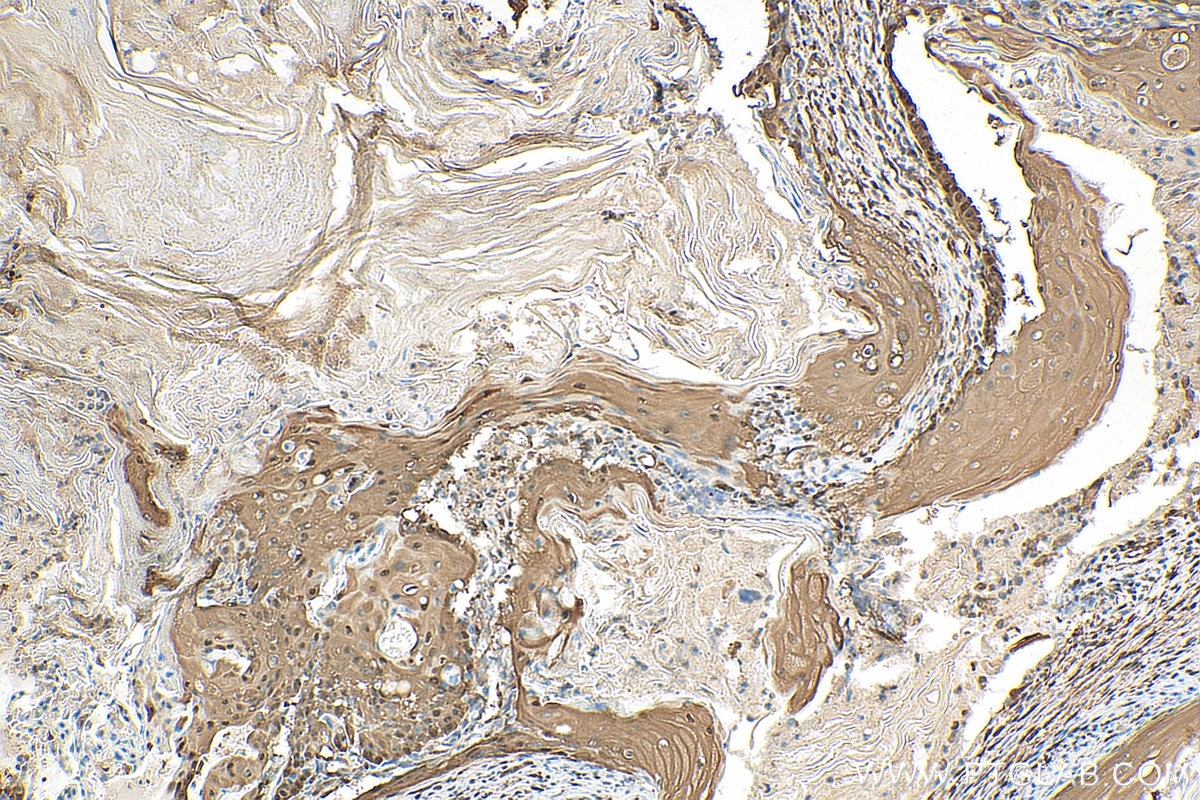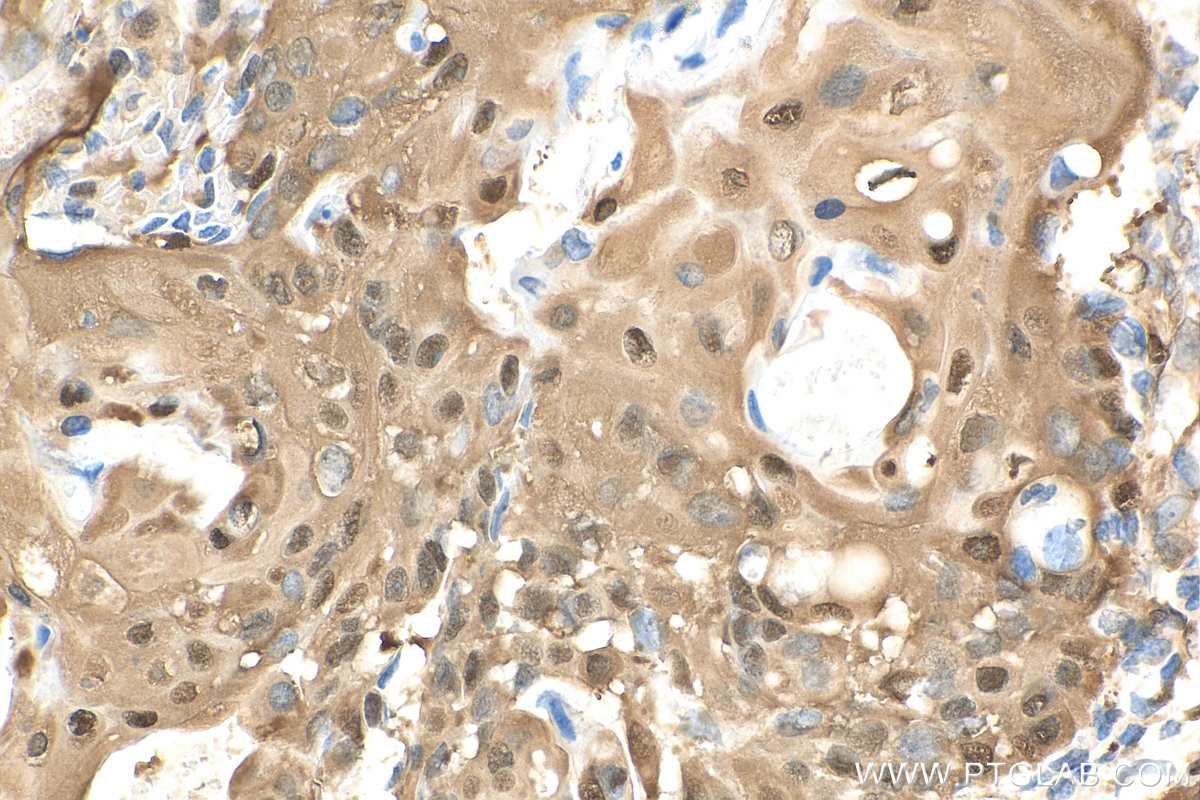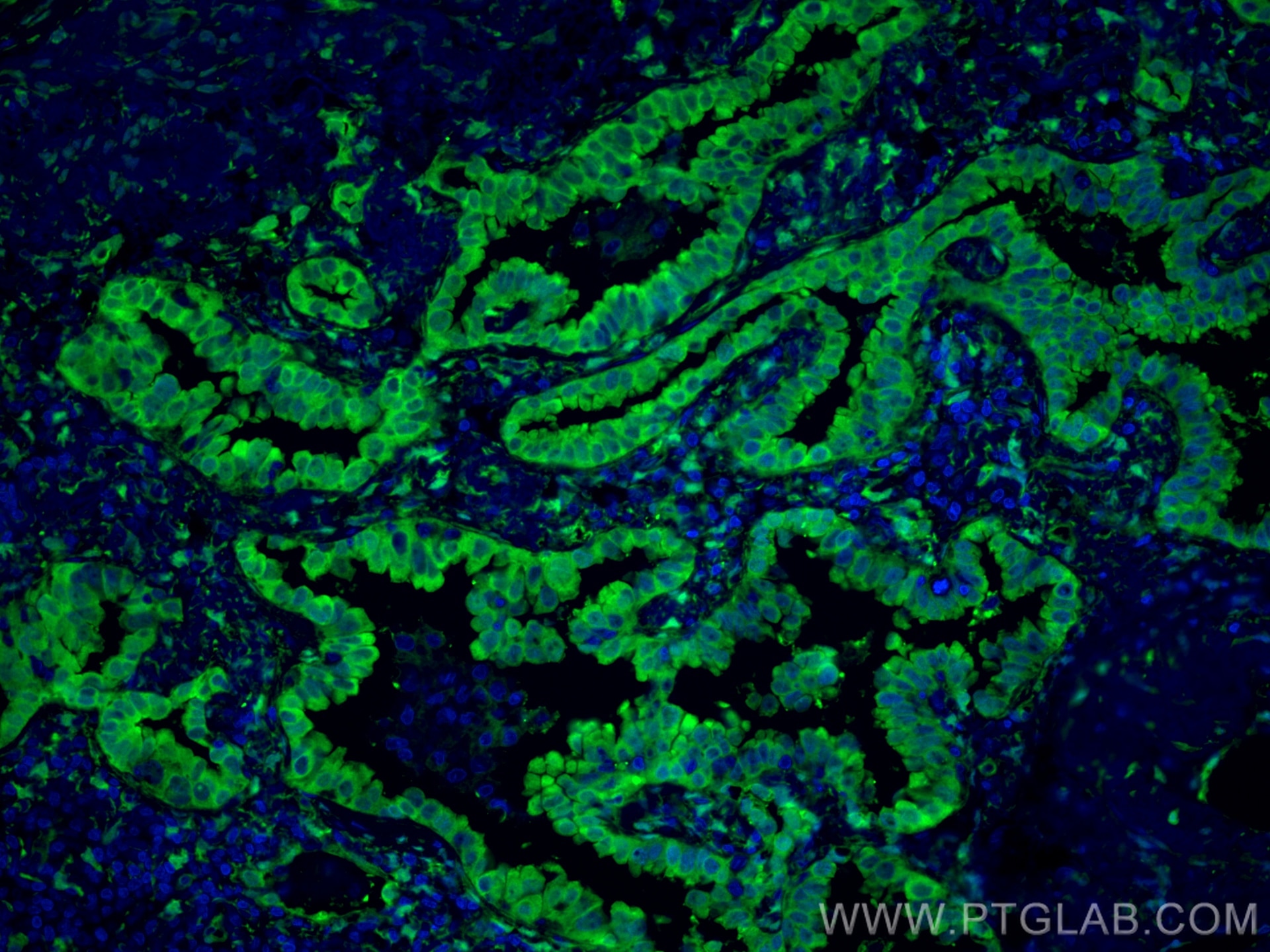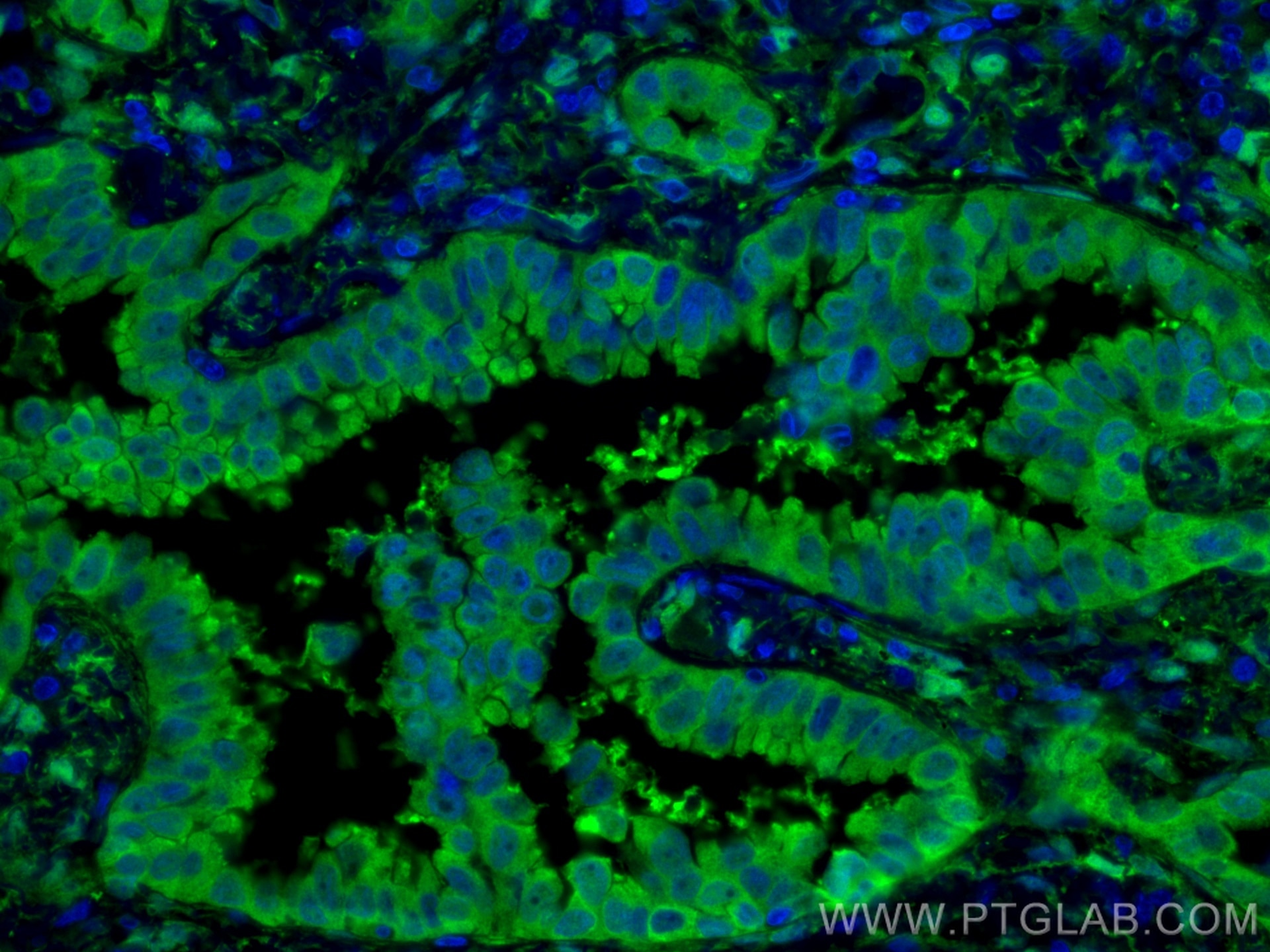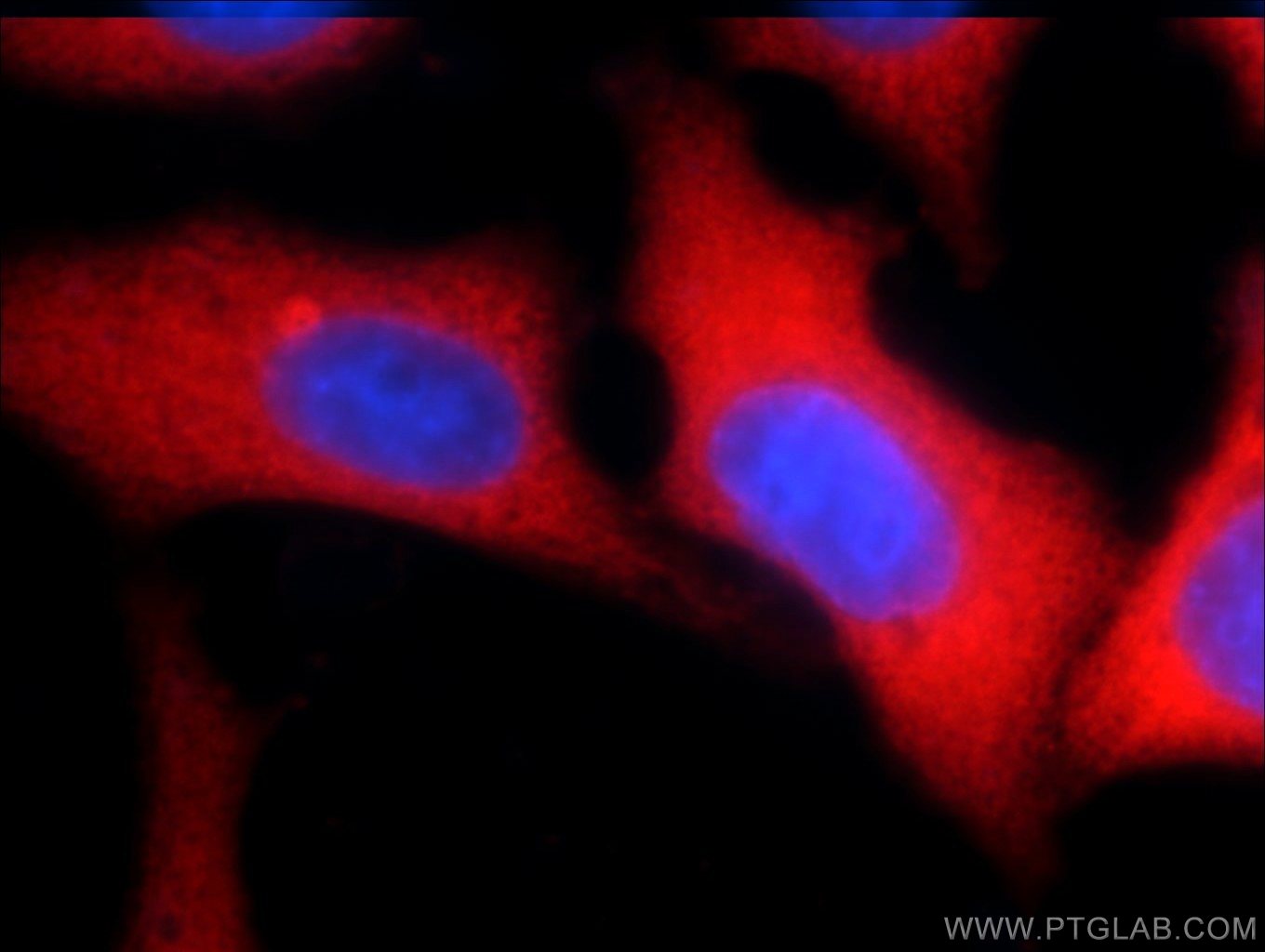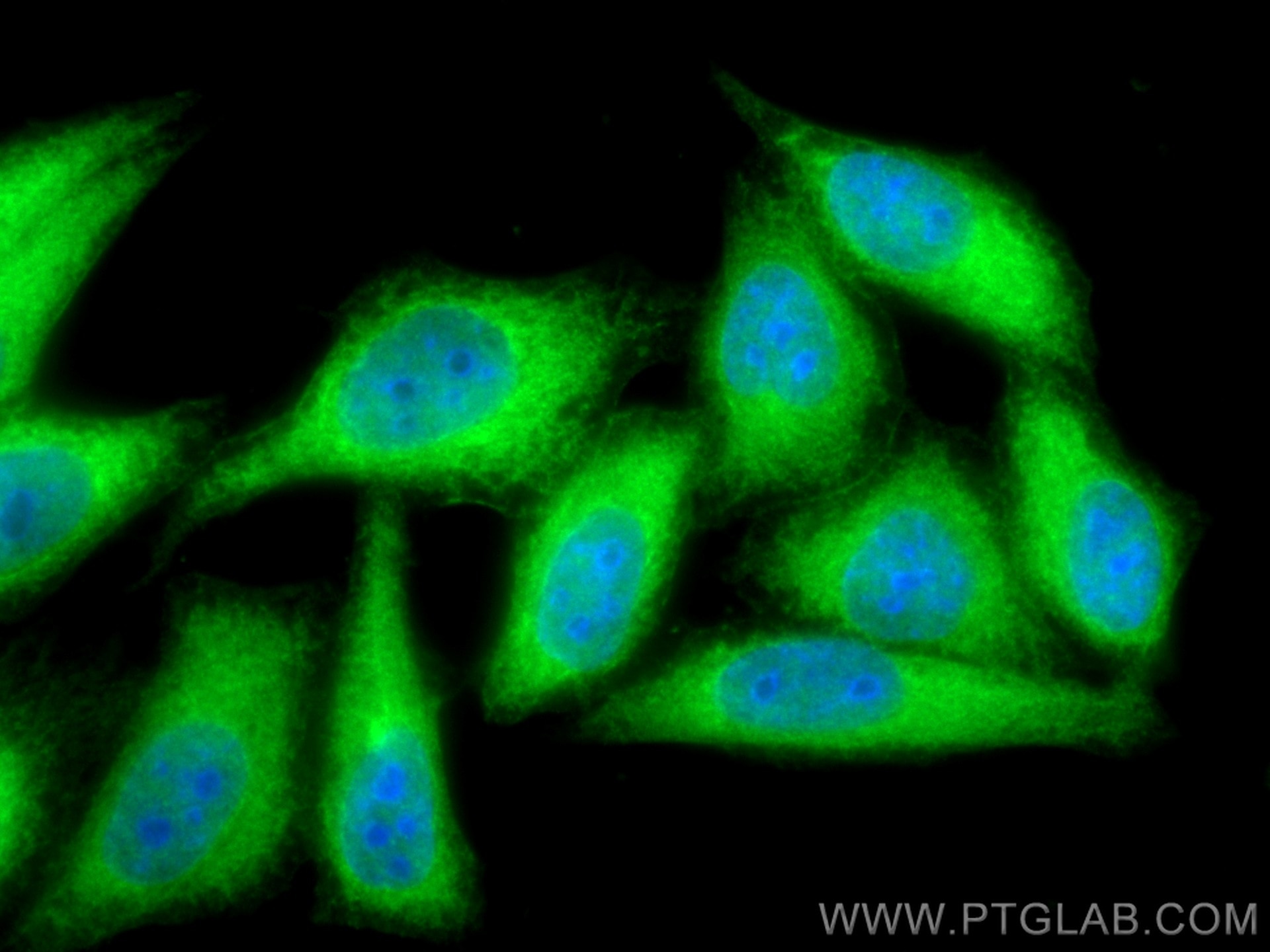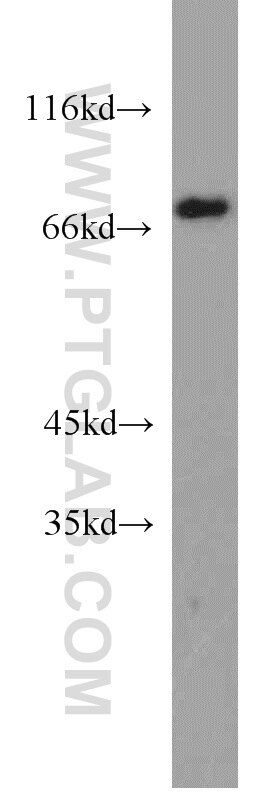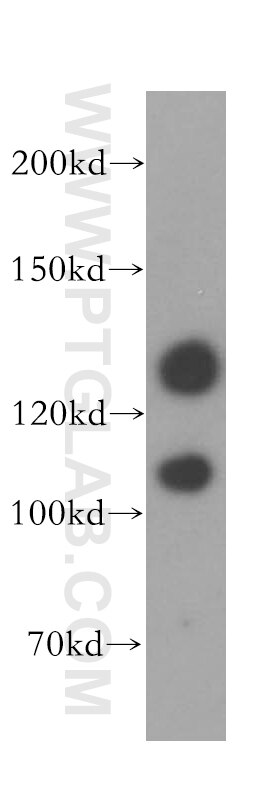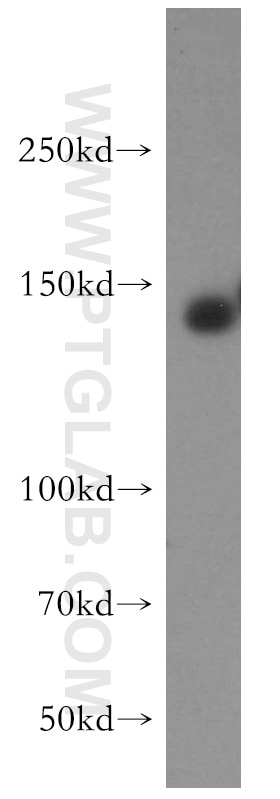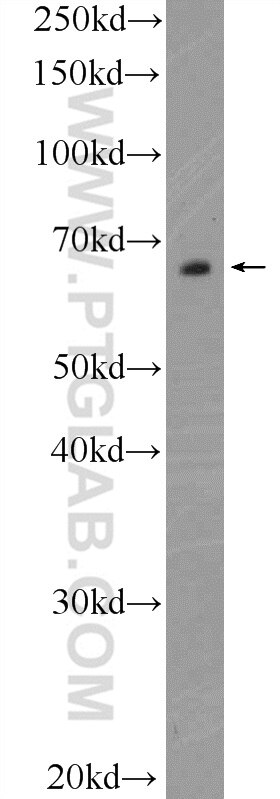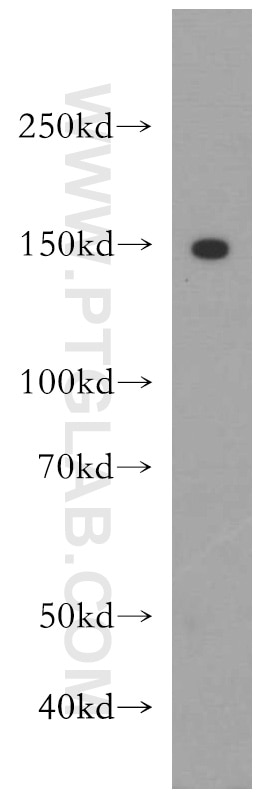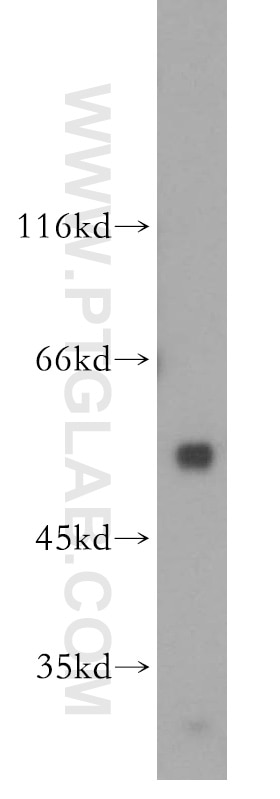- Phare
- Validé par KD/KO
Anticorps Polyclonal de lapin anti-YAP1
YAP1 Polyclonal Antibody for WB, IHC, IF/ICC, IF-P, IP, ELISA
Hôte / Isotype
Lapin / IgG
Réactivité testée
Humain, rat, souris et plus (4)
Applications
WB, IHC, IF/ICC, IF-P, IP, CoIP, ChIP, ELISA
Conjugaison
Non conjugué
256
N° de cat : 13584-1-AP
Synonymes
Galerie de données de validation
Applications testées
| Résultats positifs en WB | cellules HeLa, cellules BGC-823, cellules HepG2, cellules MCF-7, cellules SGC-7901, tissu hépatique de rat, tissu hépatique de souris |
| Résultats positifs en IP | cellules NIH/3T3 |
| Résultats positifs en IHC | tissu de cancer du foie humain, tissu de cancer du côlon humain, tissu de tumeur ovarienne humain il est suggéré de démasquer l'antigène avec un tampon de TE buffer pH 9.0; (*) À défaut, 'le démasquage de l'antigène peut être 'effectué avec un tampon citrate pH 6,0. |
| Résultats positifs en IF-P | tissu de cancer du poumon humain, |
| Résultats positifs en IF/ICC | cellules HepG2 |
Dilution recommandée
| Application | Dilution |
|---|---|
| Western Blot (WB) | WB : 1:2000-1:10000 |
| Immunoprécipitation (IP) | IP : 0.5-4.0 ug for 1.0-3.0 mg of total protein lysate |
| Immunohistochimie (IHC) | IHC : 1:50-1:500 |
| Immunofluorescence (IF)-P | IF-P : 1:50-1:500 |
| Immunofluorescence (IF)/ICC | IF/ICC : 1:20-1:200 |
| It is recommended that this reagent should be titrated in each testing system to obtain optimal results. | |
| Sample-dependent, check data in validation data gallery | |
Informations sur le produit
13584-1-AP cible YAP1 dans les applications de WB, IHC, IF/ICC, IF-P, IP, CoIP, ChIP, ELISA et montre une réactivité avec des échantillons Humain, rat, souris
| Réactivité | Humain, rat, souris |
| Réactivité citée | rat, Humain, poisson-zèbre, porc, poulet, singe, souris |
| Hôte / Isotype | Lapin / IgG |
| Clonalité | Polyclonal |
| Type | Anticorps |
| Immunogène | YAP1 Protéine recombinante Ag4510 |
| Nom complet | Yes-associated protein 1, 65kDa |
| Masse moléculaire calculée | 504 aa, 54 kDa |
| Poids moléculaire observé | 70 kDa |
| Numéro d’acquisition GenBank | BC038235 |
| Symbole du gène | YAP1 |
| Identification du gène (NCBI) | 10413 |
| Conjugaison | Non conjugué |
| Forme | Liquide |
| Méthode de purification | Purification par affinité contre l'antigène |
| Tampon de stockage | PBS avec azoture de sodium à 0,02 % et glycérol à 50 % pH 7,3 |
| Conditions de stockage | Stocker à -20°C. Stable pendant un an après l'expédition. L'aliquotage n'est pas nécessaire pour le stockage à -20oC Les 20ul contiennent 0,1% de BSA. |
Informations générales
Yes-associated protein 1 (YAP1) is a transcriptional regulator which can act both as a coactivator and a corepressor and is the critical downstream regulatory target in the Hippo signaling pathway that plays a pivotal role in organ size control and tumor suppression by restricting proliferation and promoting apoptosis. The core of this pathway is composed of a kinase cascade wherein STK3/MST2 and STK4/MST1, in complex with its regulatory protein SAV1, phosphorylates and activates LATS1/2 in complex with its regulatory protein MOB1, which in turn phosphorylates and inactivates YAP1 oncoprotein and WWTR1/TAZ. Plays a key role to control cell proliferation in response to cell contact. Phosphorylation of YAP1 by LATS1/2 inhibits its translocation into the nucleus to regulate cellular genes important for cell proliferation, cell death, and cell migration. The presence of TEAD transcription factors are required for it to stimulate gene expression, cell growth, anchorage-independent growth, and epithelial mesenchymal transition (EMT) induction. Isoform 2 and isoform 3 can activate the C-terminal fragment (CTF) of ERBB4 (isoform 3).Increased expression seen in some liver and prostate cancers. Isoforms lacking the transactivation domain found in striatal neurons of patients with Huntington disease (at protein level).It is actived by phosphorylation and degradated by ubiquitination (20048001).This antibody is a rabbit polyclonal antibody. The calcualted molecular weight of YAP1is 54 kDa, but phosphorylated YAP1 is about 65kDa. (PMID: 26695440)
Protocole
| Product Specific Protocols | |
|---|---|
| WB protocol for YAP1 antibody 13584-1-AP | Download protocol |
| IHC protocol for YAP1 antibody 13584-1-AP | Download protocol |
| IF protocol for YAP1 antibody 13584-1-AP | Download protocol |
| IP protocol for YAP1 antibody 13584-1-AP | Download protocol |
| Standard Protocols | |
|---|---|
| Click here to view our Standard Protocols |
Publications
| Species | Application | Title |
|---|---|---|
Nat Mater Reprogramming normal cells into tumour precursors requires ECM stiffness and oncogene-mediated changes of cell mechanical properties. |
Avis
The reviews below have been submitted by verified Proteintech customers who received an incentive forproviding their feedback.
FH Siddharth (Verified Customer) (08-04-2023) | Great for IF. Detects both Cytoplasmic and Nuclear YAP1.
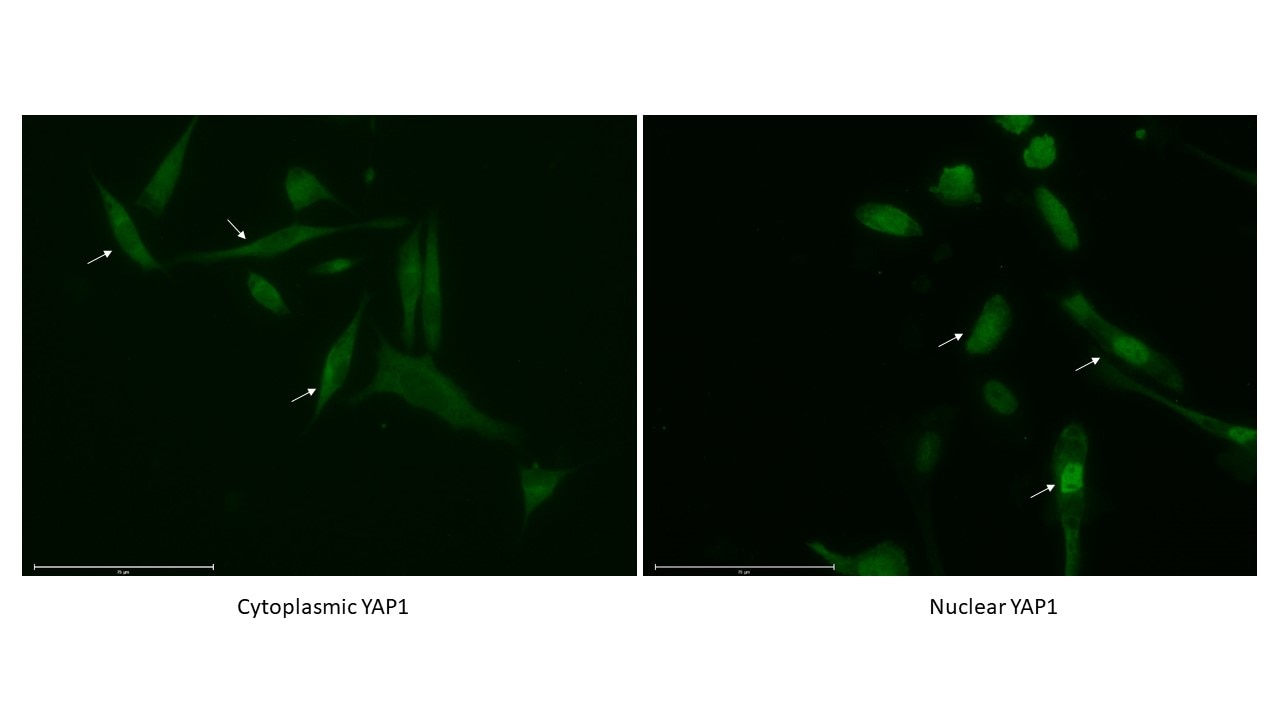 |
FH Chiara (Verified Customer) (09-15-2022) | In RH4 cells I observe by Western blot 4 bands; two bands around 70 KDa correspond to YAP, while a single band around 55 KDa corresponds to TAZ protein as proved by a RNA interference experiment.
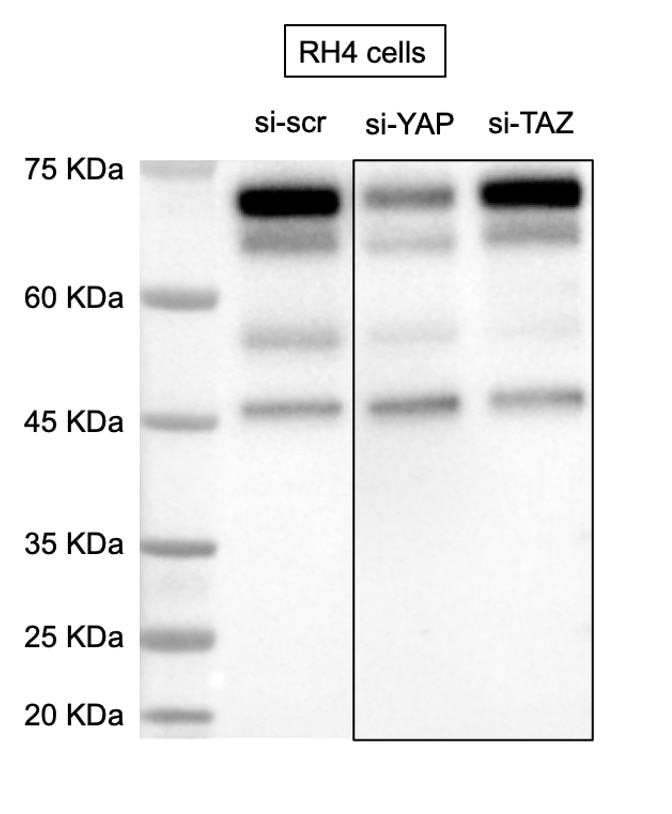 |
FH María (Verified Customer) (02-08-2022) | Works for WB (1:1000).
|
FH Arianna (Verified Customer) (03-01-2019) | Genetically validated on YAP-null liver sections.
|
FH Joshua (Verified Customer) (12-20-2018) | Cells were fixed in 4% paraformaldehyde and stained overnight at 4C. Cells were counterstained with DAPI and phalloidin. Stain was mix of nuclear, cytosolic, and junctional.
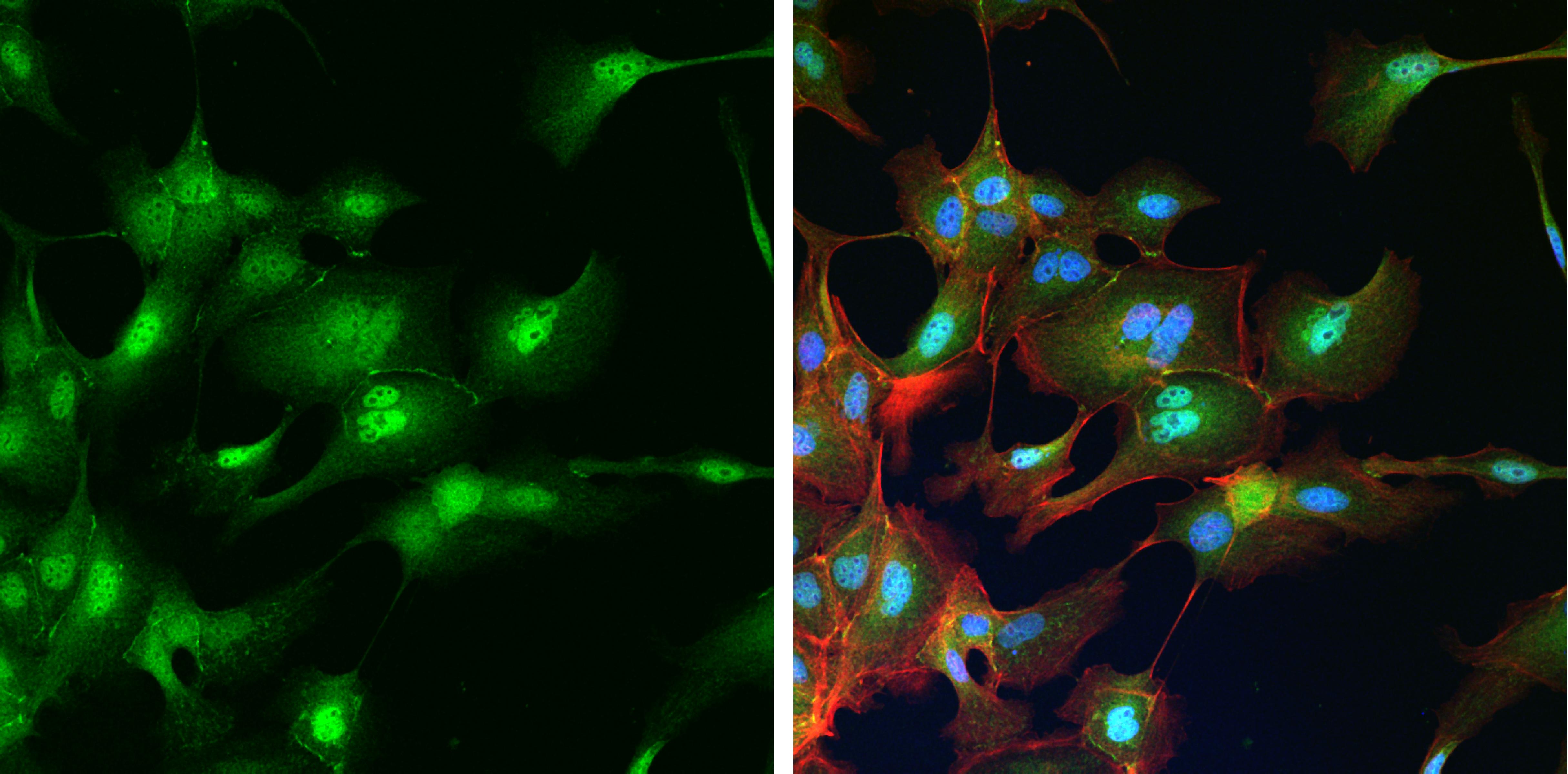 |
FH Joshua (Verified Customer) (12-20-2018) | Cells were fixed in 4% paraformaldehyde and stained overnight at 4C. Cells were counterstained with phalliodin and DAPI. Staining is mix of nuclear, junctional, and cytosolic.
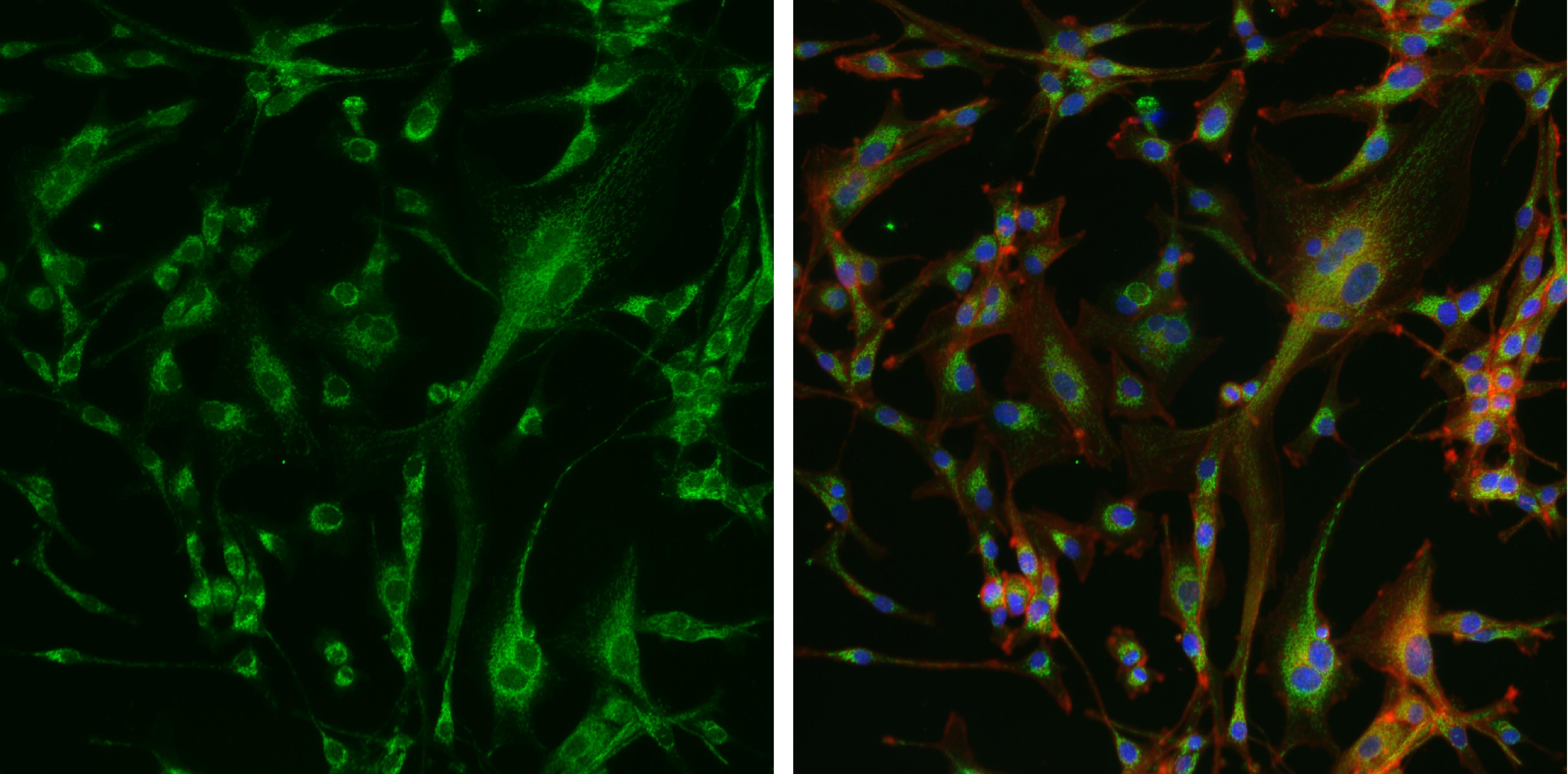 |
FH Juan Pablo (Verified Customer) (11-29-2018) | CGN treated with Shh (1ug/ml) for 48hs to induced proliferation, I see a nice induction of YAP1I get a nice clean band
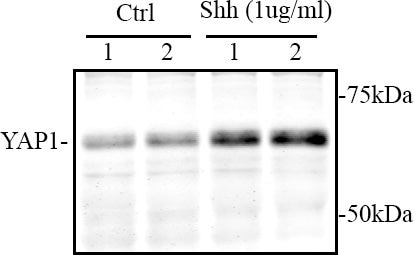 |
FH kk (Verified Customer) (11-21-2018) |
|
